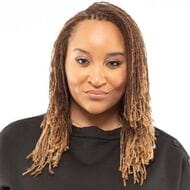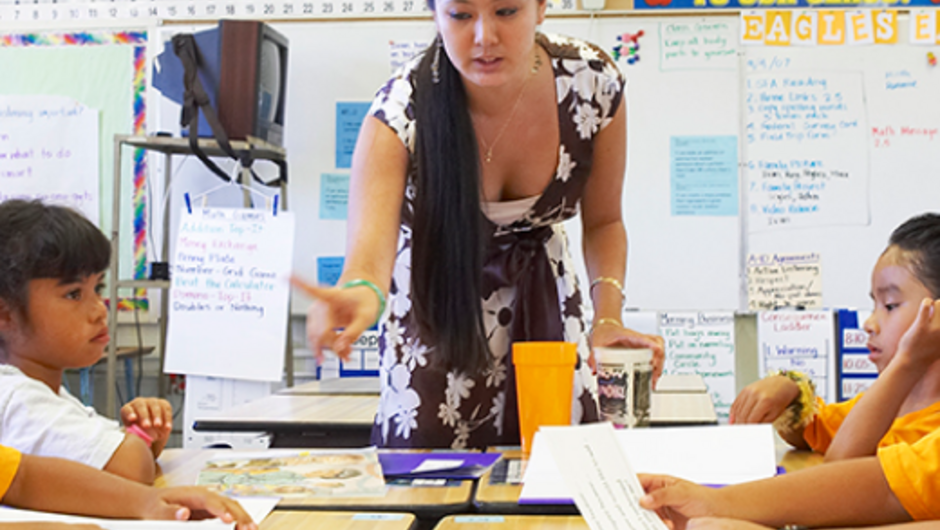
Schools Must Stop Over-Policing and Pushing Out Black Girls
Returning to in-person learning offers the chance to rethink unjust disciplinary practices that unfairly target Black girls.
Six-year-old Kaia Rolle pleads for help in the body-cam footage that police in Orlando, Florida, released in February 2020. Prior to police arrival, educators say Kaia threw a tantrum, kicking and punching three school employees in the process.
Though such tantrums are common among kids her age, the video shows an Orlando Police Department reserve officer zip-tying the hands of Kaia, who is Black, and escorting her away from her elementary school.
Not long after that, a 9-year-old Black girl named Audrey Taito, in Sacramento, California, found herself unceremoniously locked out of her email account for purportedly sending too many messages. In response to the incident, Audrey explained to reporters, “I don’t want to go back to school because they embarrass me a lot.” In Michigan that same spring, a 15-year-old Black girl referred to as Grace was sentenced to juvenile detention due to her “failure to submit any schoolwork and getting up for school” on Zoom. It wasn’t until she served 78 days in detention and there was a national outcry for the case after a ProPublica report on Grace’s situation that she was released into her mother’s custody.
In one short school term, these three news stories of Black girls enduring over-policing and hyper surveillance underscored just how much we’ve learned from national protests and outcry against anti-Blackness within and beyond public schooling: seemingly nothing.
Far too often, Black girls’ stories like those of Kaia, Audrey, and Grace are described as troubling yet isolated occurrences. Upon closer examination of school discipline data, it doesn’t take long to realize that they signal a more significant trend. Some of the discipline data on girls in U.S. public schools suggests Black girls are six times more likely to face suspension, three times more likely to be restrained, twice as likely to endure corporal punishment, and three times more likely to experience law enforcement referrals than white girls.
Monique Morris, creator of the book and film “Push Out,” has sought to draw attention to these disparities. Across her work, Morris underscores how Black girls are frequently treated as adults and viewed with suspicion. This often leads to harsher and more negative educational experiences as well as the removal—intentional or not—of Black girls from formal education. Taken together, these stats and first-hand accounts indicate that while Black girls bear the brunt of extreme disciplinary measures, they are not centered nearly enough in discussions and decisions on school improvement.
In contrast, most of the focus on racial disparities in discipline centers on Black and Latino boys. I am not here to advocate for less coverage of those incidents; we need to keep going. Instead, I am here to demand that we add nuance to that discussion by disaggregating our data and more closely examining the stats before us. Upon doing so, we can see how education is stratified for some Black girls more than all other groups of girls. Namely, Black girls who refuse to comply with white, middle-class markers of success experience the most unsafe learning environments. Of all girls, they make up the largest proportion of those subjected to extreme disciplinary actions.
Black women have primarily led the type of advocacy needed on behalf of Black girls when it comes to policing—a reality that has broad implications.
About 15% of the nation’s school-age children enrolled in public schools are Black, but the percentage of Black teachers is about half of that, 7%, federal data shows. The majority of U.S. public school teachers, about 79%, are white. This deficit underscores that Black girls likely have few options of Black educators to relate to and advocate for them. With that reality, our push to return to physical, in-classroom learning could prove disastrous for Black girl students who resist behavioral norms and whose teachers may have had limited, in-person interactions with Black girls like them.
Given the residential racial isolation of U.S. neighborhoods, our use of primarily online and remote learning may have caused teachers to miss pivotal developmental moments with colleagues that could increase their awareness of cultural nuances. Worse yet, other teachers may have been forced to forgo professional development and bias interventions as most schools scrambled to implement remote learning during the pandemic and then struggled to effectively continue it. This combination of disruption raises important thoughts and questions about the positioning and potential for policing of Black girls in post-covid learning environments:
- For some Black girls, returning to physical classrooms now and in the fall may come on the heels of grief and family loss given the pandemic’s disproportionate impact on Black families. Are teachers prepared to support and acknowledge these differences when making disciplinary decisions?
- Some Black girls are returning to an entirely new school without deep peer and teacher connections due to transitions (such as primary to secondary school) and disparate technological access. Transcripts and records typically signal students’ compliance and reveal what they don’t know rather than what they do. When they return to physical classrooms, will teachers have the time to fully get to know Black girls for who they are and how they learn, or will they rely upon transcript data alongside internalized beliefs and perspectives?
- Last, and perhaps most importantly, are school leaders—especially those who are women and not Black—willing and able to support Black girls’ academic and social-emotional needs, uplift them, and center their experiences in the classroom?
Given the pre-pandemic disciplinary stats on Black girls, the answer to these questions might be probably not—but it does not have to remain this way.
Education administrators can transition back into physical schools to reset or even overhaul discipline approaches to help mitigate how Black girls disproportionately and negatively experience the learning environment. This can include the decision to move away from having law enforcement and school resource officers on school grounds in favor of an increased presence of counselors and trained advocates.
The Columbus City Preparatory School for Girls (CCPSG) is considered an exemplary representation of this shift. As CCPSG shifted to a more restorative approach to discipline, they also held the record for fewest school suspensions within the district among traditional middle schools. Similarly, organizers and educators in the Oakland Unified School District have centered their African American Female Excellence Initiative which is designed “to develop strategies, structures, and guidance regarding how to improve the culture, climate, and conditions of female students of African descent from preschool through 12th grade.”
These examples underscore how leaders can consider improved training and approaches about the specific nuances of discipline interactions with Black girls, especially if a school must have resource officers on the grounds.
Teachers can take the initiative to enforce and advocate for alternative disciplinary approaches and measures for Black girls who are perceived as disruptive. Minor infractions such as dress code violations are often rooted in cultural incongruence but almost always addressed as blanket non-compliance. Educators who wish to better support Black girls can do so by overlooking such minor incidents and by reimagining and implementing school codes of conduct that are drafted with student input and aim to support students rather than punish them. And perhaps most important of all, bystanders who notice when their colleagues and school leaders overly rely upon law enforcement to address behavioral concerns can bring attention to this fact and demand different approaches.
If educators feel they can’t control how Black girls interact with the system, perhaps they can limit how much the system has access to Black girls.
For all of these reasons, returning to in-person learning shouldn’t mean going back to the way things were—systemically exclusionary toward Black girls. The greatest improvement we can make for Black girls is to disrupt the school-to-confinement pipeline.
Our Inaugural Columnist
We are pleased to introduce Brittany M. Williams as One Day's first columnist. Her columns will appear monthly for the next three months. If you are interested in serving as a future columnist or would like to suggest someone, email us.
Brittany M. Williams, Ph.D. is a writer, speaker, and assistant professor of higher education who has the distinct privilege of having been born and raised in Southwest Atlanta. She is a proud product of Atlanta Public Schools. Williams researches social class, inequities, and the career development and workplace experiences of Black women in higher education contexts. Learn more about her at DrBritWilliams.com.
We want to hear your opinions! To submit an idea for an Opinion piece or offer feedback on this story, visit our Suggestion Box.
The opinions expressed in this piece, and all others in our Opinion section, represent those of the authors and do not necessarily reflect the views and opinions of the Teach For America organization.
Sign up to receive articles like this in your inbox!
Thanks for signing up!
Content is loading...





